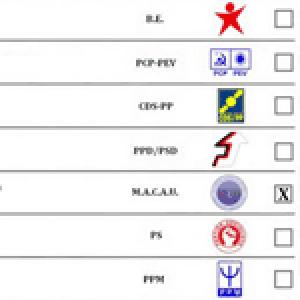Create RANGEs in DDIC without getting all wound up

I am using RANGEs more and more. I use them at breakfast, lunch, and dinner and outside meal times. It’s like soy sauce. A few spoonfuls and everything is instantly tastier.

I am using RANGEs more and more. I use them at breakfast, lunch, and dinner and outside meal times. It’s like soy sauce. A few spoonfuls and everything is instantly tastier.

If I needed to create locking entries in a ZCOISO table I had created, up to two days ago I would have gone to SE11 to create a locking object for the ZCOISO table so that I could then use the function module generated by the locking object to lock the data.
But not anymore.

The client where I’m working at the moment owns more SAP systems than the number of volcanoes in Chile. And, of course, it’s inevitable to have multiple sessions open for several of those systems. With the windows minimized it’s impossible to know the matching between systems and sessions. I mean, it was impossible, because today that’s already possible:

Most of my friends, when they buy a new computer, worry a lot about CPU speed, disk speed and memory speed and whatnot speed. And then they go and buy a €6 mouse and a €7 keyboard. Ironic. While the CPU, the disk and the memory and all that other stuff often end up being wasted, the mouse and the keyboard are used to the max the entire time the computer is in use.

It’s been a while since Abapinho played with fire. Today he will. Because today he’ll show you how to execute DOS commands on the user’s local machine. After you finish reading this article, you’ll be ready to format the hard disks of all your users. Dealing with danger helps make us aware of the power we have and the responsibility that comes with it. Dear reader, listen to your conscience.

SAPlink is a Z program that is installed in the development environment and which enables a wide variety of object types to be imported and exported from the Workbench.
Take a look here at some examples of how SAPlink can be used:
To transfer a table from one SAP system to another
To share a class on the internet
To make a local security backup of a set of programs before making a dangerous change
To keep a development in our personal repository (in Evernote, of course) in case you need it later in another project
Etc.

Let’s start by assuming that you have some dignity and so you don’t use internal tables with HEADER LINE anymore ;)
Given this, let’s suppose you declare an internal table:

There are some projects in which the authorisations group associated with table maintenance is always &NC;&, that is, Not Classified. It signals that everything there is friendly and nobody is hurting anyone else. But there are other projects where authorisation groups are taken seriously. But this is not synonymous with saying that they are organised. Serious or not, usually it all ends in a big mess, with nobody knowing who is authorised to do what.
This tip may help.

The harsh truth, at all costs, is that structures are out of date. Nowadays FIELD-SYMBOLS are in.
When you make a LOOP to an internal table of course that you also use ASSIGNING FIELD-SYMBOL instead of INTO Structure,correct?
But what was screwing everything over was APPEND and INSERT. I did not know how to use a structure to add records

For some strange reason, LISTBOX is rarely used in report selection screens. Even though it’s widely used throughout the web. Who knows why.
Dear reader, I suggest you pay attention to its advantages:

Depois de o site irmão ABAPZombie (grande site brasileiro sobre ABAP) me ter entrevistado há uns meses atrás, aqui fica finalmente a minha vingança Zômbica. Entrevistar o Mauricio foi muito simples porque as perguntas que me fizeram são tão boas que resolvi virá-las contra o feiticeiro (Mauricio, espero que não leves a mal ter-tas usurpado!). As suas óptimas respostas ajudarão certamente os leitores portugueses a terem uma ideia de como funciona o mercado ABAP lá no Brasil:

Go to SE38 and create a program with the code below. Then turn the computer sound on and press F8. INCLUDE ole2incl. DATA : ole TYPE ole2_object, voz TYPE ole2_object, texto TYPE string. CREATE OBJECT voz 'SAPI.SpVoice'. texto = 'Olá eu sou o SAP e falo português com sotaque estrangeiro'. CALL METHOD OF voz 'Speak' = ole EXPORTING #1 = texto. Note: the parrot not in the photo, just the macaw with which he was talking :)

SAP has a book called Official ABAP Programming Guidelines which describes rules and best practices on how to program in ABAP. In there you can read: Page 42: Rule 3.1: Use ABAP Objects whenever possible for new and further developments. Classic processing blocks may be newly created in exceptional cases only. Page 45: Within such a [classic] processing block, however, you should immediately delegate the execution to a suitable method (see Rule 6.

Nice relation diagrams for standard tables. Rui Dias revealed me a site where you can check the relation between any standard table with each other. For instance for T012. And if you try KNA1 it gets even better. Do you like it? I do. Thanks Rui Dias. Greetings from Abapinho.